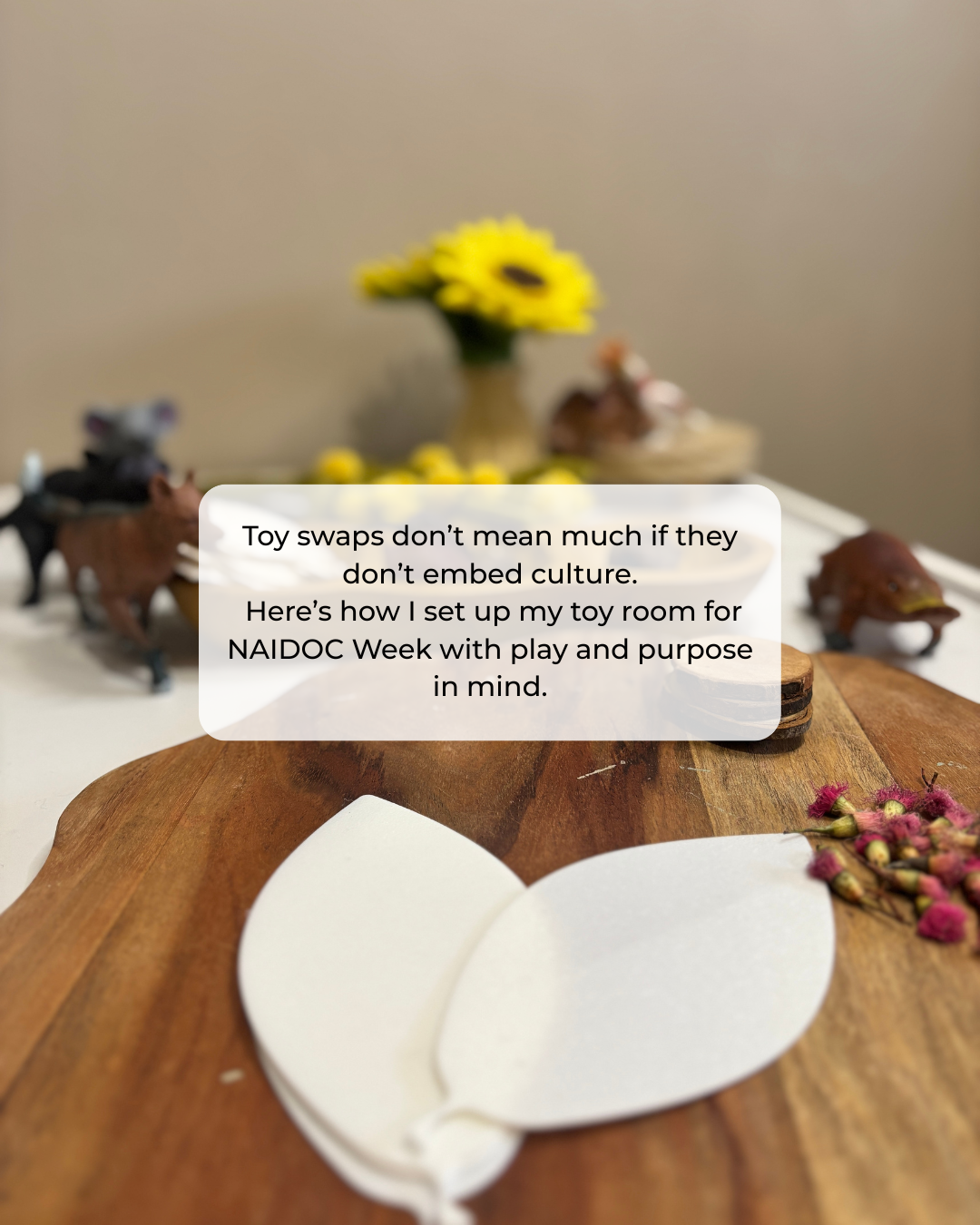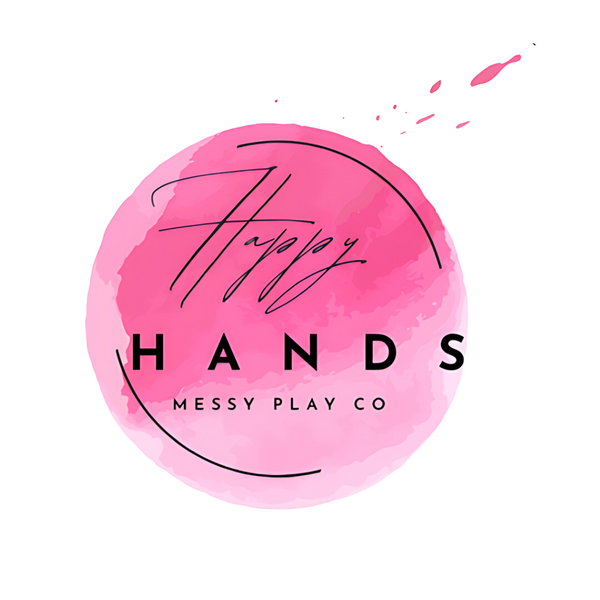
Embedding Culture Through Play: Inside My NAIDOC Week Toy Room Refresh
Share
Why NAIDOC Week Belongs in the Toy Room
NAIDOC Week is more than a date on the calendar. For me—as a mother, early childhood educator, and trainer and assessor in the nationally recognised Cert III and Diploma of Early Childhood Education and Care—it's an opportunity to reflect on the depth of culture, connection and knowledge held by the world's oldest continuous living cultures, and how we honour that in our daily practice. Not performatively. Not just through a display. But through embedded, intentional, everyday play.
In this post, I'm opening up my home toy room to share how I've curated this space for NAIDOC Week through a cultural, developmental and educational lens. Whether you're a parent at home or an educator striving for Exceeding NQS, this setup is designed to model meaningful, developmentally aligned and inclusive practice you can adapt to your own space.

What Makes a Toy Room Culturally Responsive?
High-quality early learning environments don't just look pretty—they're thoughtful, intentional, and underpinned by theory and pedagogy. Cultural responsiveness, especially during weeks like NAIDOC, isn't a one-off display or poster. It's about creating an environment that:
-
Embeds First Nations perspectives in everyday play
-
Invites exploration of Country, culture, language and symbolism
-
Connects children to place, identity and community
Under the Early Years Learning Framework (EYLF), this directly supports:
-
Outcome 1: Children have a strong sense of identity
-
Outcome 2: Children are connected with and contribute to their world
-
Outcome 5: Children are effective communicators
These outcomes are only truly achieved when the practices behind them are authentic, inclusive, and ongoing—not tokenistic.
My NAIDOC Toy Room Setup: What and Why
Here’s a breakdown of each element I included in this space and the pedagogical reasoning behind it:
1. Storytelling & Book Corner ("Wombat Stew")
What:
-
Wombat Stew by Marcia K. Vaughan
-
Australian Animals Felt Story Board
-
Natural loose parts for retelling and dramatic play
Why: Storytelling is foundational for cultural learning. Books like Wombat Stew open rich discussions about Australian animals, humour, and bush foods while allowing children to explore oral storytelling, imagination and narrative structure. This aligns with EYLF Outcome 5, supporting language development, cultural knowledge and communication.
Using props, puppets and natural elements to support story recall also enhances memory, comprehension and emotional engagement—a best practice often observed in Exceeding-rated services.

2. Nature-Inspired Small World Play
What:
-
Wooden trays with gumnuts, bark, leaves, wooden stones
-
Felt native animals
-
Ethical handcrafted accessories
Why: This area supports Outcome 2, fostering environmental awareness, empathy, and responsibility. It models play that respects and reflects the local environment and allows children to explore interconnectedness with the land. Using open-ended materials encourages self-direction, independence, and respect for natural resources—hallmarks of child-centred practice.
These kinds of materials also support fine motor development and executive functioning, giving children the freedom to arrange, plan, and sequence their stories.

3. Loose Parts Shelf & Self-Selection Zones
What:
-
Open shelving with baskets of blocks, animals, wood pieces, cultural symbols
Why: Access and autonomy are critical. By creating a low, clearly labelled space for independent selection, I invite children to follow their interests, revisit familiar materials, and scaffold their learning with confidence. This directly aligns with Outcome 1: identity and agency.
The inclusion of Aboriginal symbols, natural materials and native animals—not just in craft activities but in everyday use—models genuine inclusion and respect. For parents at home, it shows how we can normalise cultural content as a valued part of our daily learning.

4. Book Wall Featuring Diverse Australian Titles
What:
-
Titles like The Rainbow Serpent, Who saw Turtle, Neville the Devil, Awesome Australian Animals, Migaloo and more.
Why: Children's books are not just for literacy—they're springboards for identity formation, inclusion, empathy, and worldview. Curating a book wall that includes Aboriginal authors, native themes, and connection to place allows young children to see themselves, their land and their community reflected in meaningful ways.
This models Exceeding practice by embedding respect for diversity and community contributions into everyday routines.

What This Looks Like in Practice (for Educators + Parents)
Whether you're setting up your family playroom or designing a learning space, here are key takeaways:
-
Start with what you already have. Natural materials, a few thoughtful books, and loose parts go a long way.
-
Embed culture through play, not just decor. Let children handle, explore and represent cultural ideas in their own way.
-
Use NAIDOC Week as a launchpad—not the full extent. Culture is not a theme. Embedding First Nations perspectives should happen all year round.
-
Reflect critically: Ask yourself, "Is this performative or embedded? Am I inviting curiosity, or just ticking a box?"
From Professional Practice to Home Truths
As someone who has both taught and trained educators, I know how tempting it can be to "cover" a celebration week with a poster and a story. But real quality practice—the kind that shapes a child’s worldview and supports long-term learning—comes from slow, consistent, embedded decisions.
Let this be your reminder that beautiful, culturally rich, play-based learning environments don’t require a Pinterest-worthy setup or a big budget. They require intention, reflection, and respect.
And yes, even small changes in your toy room can make a big difference.
Explore the Full Collection: My NAIDOC-themed sensory products, doughs, and accessories are available for families and educators wanting to build these ideas into their own spaces.
